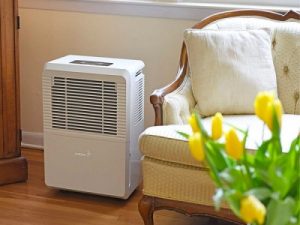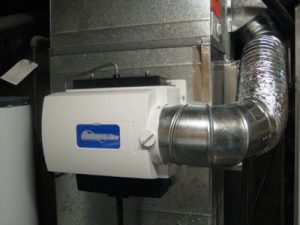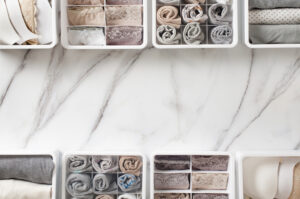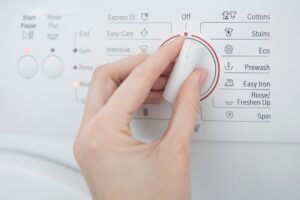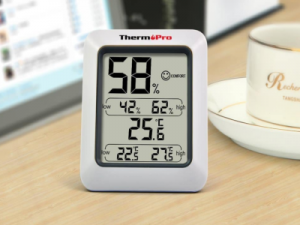
Humidifiers are excellent for use in your home to ease problems caused by dry air.
So, can mold in a humidifier make you sick? These machines; however, need regular maintenance or they will make you sick by spreading mold and bacteria into your home environment. When using these machines, you must monitor your humidity levels and clean the unit regularly.
Why Use a Humidifier?
A humidifier is a machine that will send water vapor or steam into your home so your moisture levels increase. They are excellent units to help relieve sinuses that have become dry, if you suffer from bloody noses, and even dried skin and lips. The cool-mist Humidifiers can ease cold and respiratory symptoms and in some people, help with allergies and asthma.
There are different types of Humidifiers for your home use, and the model you choose, depends on your needs:
- Ultrasonic Humidifiers will give you a cool-mist while producing an ultrasonic vibration. These units provide a warm or cool mist with the use of a metal diaphragm. The molecules of water it produces are tiny and are almost immediately absorbed by the air. These units do not use a fan, so their operation is quiet.
- Evaporators will use a fan to blow air through a filter, wick, or belt which is wet to vaporize the air in your home.
- Central Humidifiers are built right into your home heating and air conditioner system and will provide benefits to your entire house.
- Impeller Humidifiers create a cool mist by using a rotating disk.
- Steam Humidifiers create steam that cools with the use of electricity. These units are not suggested for homes with small children as the water inside is hot and can cause burns if spilled.
Health Issues From Dirty Humidifiers
When Humidifiers are not cleaned regularly, the reservoirs inside as well as the filters (if the machine uses one), will become dirty and breed mold and bacteria. The bacteria and mold can become serious problems for those suffering from allergies or asthma, and even people without illnesses are susceptible to flu-like symptoms or lung infections when the contaminated steam or mist is released into their breathing air.
The models which use evaporation or steam vaporizers are less likely to release these dangerous airborne allergens than the models which release cool mists.
How to Avoid Health Issues With Your Humidifier
To keep harmful bacteria and mold from growing inside of your humidifier, you need to keep the units and their filters clean.
These are some tips for you to use in cleaning portable units:
Demineralized or Distilled Water
Your tap water has minerals in it that can build up deposits inside of your humidifier and will allow for bacterial growth. When these bacteria are released into your breathing air, you will notice white deposits on your furniture that resembles dust.
These bacteria are floating around in your air and being breathed into your lungs. If you use demineralized or distilled water in the unit, it lowers the mineral content and reduces or eliminates the bacteria floating through your home.
Change Water
You should not allow deposits or film to grow inside of the unit. Empty the water tanks, dry the surface and refill the humidifier with clean, freshwater every day. If the unit is plugged into electricity, you need to unplug the machine before emptying and refilling.
Clean the Machine
The humidifier should be cleaned well every three days. Unplug the unit and remove any mineral deposits you see in the tank or any other part of the machine. Hydrogen peroxide is the suggested solution for cleaning home Humidifiers and can be found in almost any pharmacy. Combine hydrogen peroxide with water to create a 3% peroxide solution.
Rinse the Tank
You do not want harmful chemicals in your breathing air, so you should rinse the tank thoroughly after using a cleaning solution before you resume use of the machine.
Change Filters.
If your unit uses a filter, you should change it as often as suggested by the manufacturer. Check the filter regularly as you may need to change it more often if it is showing any signs of being dirty. This process is also recommended for your heating and air conditioner systems in your home.
Keep the Surrounding Area Dry
The area around your humidifier should remain dry. If you notice the area becoming damp, and this includes any drapes, tablecloths, or flooring, you should turn down the settings on the machine as it is putting too much moisture into your air.
Prepare for Storage
When the season’s change and you no longer have dry air in your home, it is time to store the machine. Drain and clean the unit before storing it, and throw any cartridges or filters that have been used.
Follow Manufactures Instructions For Central Humidifiers
If your humidifier is built into your home through your heating and air conditioner system, you should follow the instructions in your manual for cleaning and maintaining the system. You can call your cooling and heating specialist if unsure how to perform this process.
Replace Old Units
Humidifiers can build up deposits that become difficult or even impossible to remove. Since these deposits allow for the growth of mold and bacteria, you should replace old units which cannot be cleaned properly.
When a humidifier causes health issues instead of relieving them, it is almost always related to the mold and bacteria growing inside of the unit. This condition happens easily as the purpose of the humidifier is to hold standing water which will be released into the air through steam or evaporation.
The water going into the air should be sterile, but if the water stands too long in the reservoir, it becomes a natural environment for the growth of bacteria and mold. Once the unit has become infected, your humidifier becomes a distribution system for spreading mold and germs into your breathing space.
The spread of mold by a humidifier sounds scary and might make you wonder why you should even use this type of device. The fact is, these machines provide a lot of benefits when maintained and cleaned properly.
By following the suggestions above, it is easy to prevent your humidifier from becoming a dispenser of mold and bacteria and allows it to benefit your health and home.










